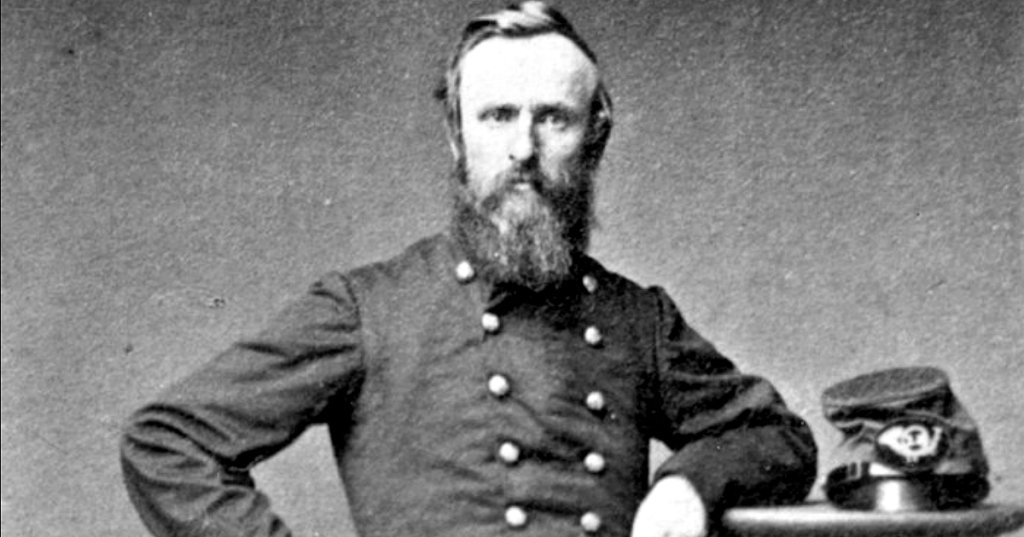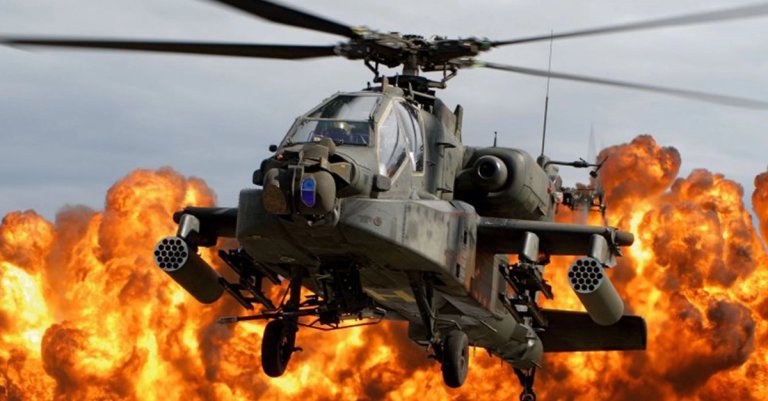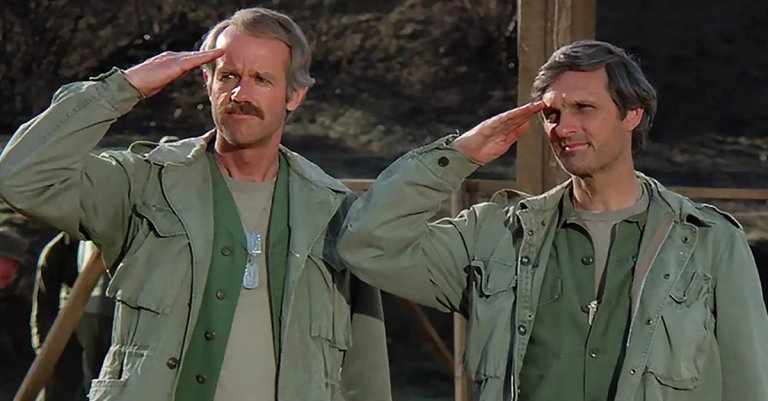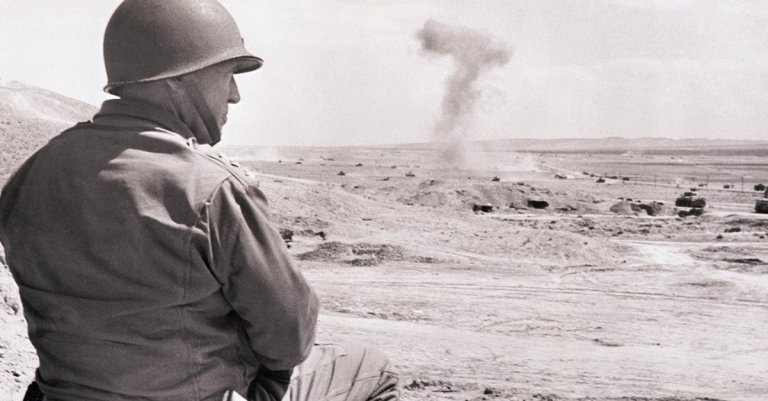

American Presidents are civilians by design, some with little or no military experience at all, and are unlikely to ever serve in a combat role while in office (unless they’re in office while aliens attack Earth). In the minds of voters, military experience often appears to be a plus when considering who would be the next Commander-in-Chief. It probably helps when they actually take the office.
But not every veteran POTUS saw action. Eisenhower was a great logistical planner, but he never served in a direct combat role. George Washington’s combat record as a junior officer is spotty, but his decision-making capacity, strategic vision, and ability to inspire those around him were infinitely more essential to his legacy and the history of the United States. We all know Geroge Washington’s war history.
Then there were those whose service would affect the outcomes of battles, of entire wars, and of the nation itself. Here are eight presidents who actually saw combat in a big way:
1. Andrew Jackson (War of 1812, Indian Wars)
No president ever held a grudge like Andrew Jackson. This was a guy who fought 103 duels before he was ever elected president. Yet he only killed one man (in a duel, I mean. He killed lots of people, just in other ways).
At the age of 13, Jackson served as a messenger for a militia unit fighting in the Revolutionary War. After he was captured, he refused to shine the boots of a British officer, who then used his saber to give Young Jackson the scars that would be on his face for the rest of his life. That sort of thing stays with a young man.

As a general, his most famous military success was at the 1815 Battle of New Orleans during the War of 1812. The British threatened the city under Jackson’s command. Jackson assembled a motley force of 4,700 men, comprising Army regulars, militia, sailors, Marines, citizens, Choctaw warriors, and a band of pirates led by Jean LaFitte. Together, they held off 11,000 British troops and the Royal Navy fleet in a battle that couldn’t be won.
His victory would (eventually) put Jackson in the White House, where Old Hickory would be the first U.S. President anyone tried to assassinate. An unemployed house painter pulled two pistols on Jackson, but they both misfired, allowing Jackson to beat the would-be killer with his cane.
2. William Henry Harrison (War of 1812, Indian Wars)
Harrison was the commander of American forces at Tippecanoe, the architect of Shawnee leader Tecumseh’s defeat, and the guy who gave the United States its first victory against violent religious extremists. Not bad.
Tecumseh and his brother, a “prophet” called Tenskawata, began using visions and magic to incite Natives in the Indiana territory against American settlers. In 1810, Tecumseh met then-Governor William Henry Harrison with 400 warriors to demand the rescission of a treaty. When Harrison refused, Tecumseh ordered his warriors to kill Harrison, who responded by drawing his sword. A Potawatomi chief intervened, and Tecumseh’s warriors left for the time being.
When the war finally broke out, Harrison repeatedly assaulted the Native tribes, most notably at Tippecanoe, where the magical forces of Tecumseh were defeated by Harrison’s actual military forces.

Tecumseh made a comeback in the War of 1812, this time backed up by the British. Harrison responded by quickly capturing Detroit (for better or worse) and then invading Canada. He defeated the British and got some vengeance against Tecumseh at the Battle of the Thames. Tecumseh was killed, the Americans burned a local settlement (built by pacifists, probably to avoid getting their settlement burned down), and then went back to Detroit.
Harrison delivered the longest inaugural speech in American history without a coat on a cold, wet day, which resulted in the shortest presidency in American history.
3. Zachary Taylor (War of 1812, Indian Wars, Mexican-American War)
Zachary Taylor also cut his teeth fighting Tecumseh during the War of 1812, famously holding Fort Harrison with 20 men against 600 under the “inspiring” battle cry, “Taylor Never Surrenders!” It turns out he was pretty good at checking native tribes. He also fought them in the Black Hawk War and the Seminole War.
By the time war with Mexico broke out, Taylor was a general and was widely known as “Old Rough and Ready.” He lost only 37 men against an army that vastly outnumbered his own, marched on the “impregnable” city of Monterrey, and captured it in four days. And this wasn’t even his biggest victory.

President Polk deliberately assigned all but 4,650 of Taylor’s troops to General Winfield Scott to capture Veracruz, in an effort to curb Taylor’s growing popularity back home. Having learned of Taylor’s weakened army, Mexican General and dictator General Antonio Lopez de Santa Anna sent his entire army of 15,000 to annihilate him.
As Taylor’s army turned the Battle of Buena Vista into a complete rout of the numerically superior Mexicans, his order “Double-shot your guns and give ’em hell” was used as a campaign slogan to catapult Taylor to the presidency, succeeding Polk.
Taylor was so popular that he was elected as the Whig Party candidate despite disagreeing with almost every issue for which the party stood.
4. Franklin Pierce (Mexican-American War)
Franklin Pierce was so eager to fight for his country that he turned down President Polk’s nomination as Attorney General. For this, he earns a great deal of respect. The first part of his military career, however, was less like Zachary Taylor’s and more like Ernest Goes to Mexico.
He volunteered to join the Army as soon as war with Mexico broke out in 1846, even though there were no New England regiments actually in existence at the time. When Congress authorized those regiments, he was appointed the colonel in command and sent to Veracruz.

When he finally arrived in Mexico, he was promoted to brigadier and linked up with Gen. Winfield Scott at the Battle of Contreras. Everything was okay until his horse was startled, causing his saddle to jam his groin as hard as possible. The horse then fell into a crevice, pinning Pierce under it and forcing someone else to take command. He injured his knee the next day and fell so far behind his men that the battle was over by the time he caught up.
General Scott didn’t want to let Pierce command his brigade at the Battle of Churubusco the next day, but he eventually did. But Pierce’s wounded leg hurt so much, he passed out on his horse in the middle of the battle.
5. Ulysses S. Grant (Mexican War, Civil War)
Grant famously became the general the Union needed to win the Civil War. He was forced to resign from the Army for drunkenness before the war, but when the South seceded, he raised a regiment of volunteers that he used to take the fight to the Confederates in the West.
Eventually, he commanded his friend, and fellow general William T. Sherman, to burn the South to the ground.

He always showed this level of doggedness throughout his military career. During the Mexican-American War, he led cavalry charges despite being only a quartermaster. As a messenger, he braved the sniper-lined streets of Monterrey while hanging off the side of his horse, using it as a shield.
At the Battle of Chapultepec, he carried a howitzer to the top of a church steeple, a move essential to the final assault on Chapultepec Castle and to winning the war itself. But the Marines don’t mention that in their hymn.
6. Rutherford B. Hayes (Civil War)
Not much is really said about Rutherford B. Hayes these days, but the former president has probably one of the most active war records of any chief executive. He was a Union officer during the Civil War, volunteering after Fort Sumter fell and serving in an active combat role until the Confederate surrender at Appomattox.
In September 1862, Robert E. Lee’s Army of Northern Virginia was advancing northward into Maryland. The Union Army under Gen. George B. McClellan met the divided Confederates in a series of three pitched battles. At the head of the lead regiment was Lieutenant Colonel Rutherford B. Hayes.
As Hayes’ 23rd Ohio charged an entrenched Confederate position, a bullet tore through his arm, shattering the bone. After tying a handkerchief tourniquet around it (and presumably rubbing some dirt on it), he continued the attack.

While most Civil War veterans would lose an arm to such an injury, Hayes probably didn’t get an infection because gangrene was afraid of him. Instead, he spent the next two years skirmishing with Confederate forces in Tennessee and Virginia.
He had his horse shot from under him at the Battle of Kernstown, where he was then shot in the shoulder. He was also struck in the head by a spent round at Cedar Creek in 1864, the year he was promoted to brigadier general and brevet major general.
He was then elected to the Presidency by sheer tyranny of will in 1876, despite not winning a majority of electoral or popular votes.
7. Theodore Roosevelt (Spanish-American War)
Colonel Roosevelt was an adventurer, explorer, scholar, author, historian, boxer, cowboy, big game hunter, and elected official. Teddy, as he hated being called, was also fearless and nearly indestructible even before he went to war.
Unfortunately for Spain, when the USS Maine was sunk in Havana harbor, Roosevelt resigned as Assistant Secretary of the Navy to go and liberate Cuba. He and Col. Leonard Wood raised the 1st Volunteer Cavalry Regiment – known to this day as the “Rough Riders.”

They distinguished themselves at the Battle of San Juan Hill. During the fight for nearby Kettle Hill, he led the charge as the only man on horseback, moving from position to position as his men advanced up the hill, over open ground, against an entrenched enemy. When his horse was stopped by barbed wire, he walked the rest of the way.
Histories of the war often portray Spain as having barely put up a fight, but that’s far from the truth. The Americans fought their way to the top of the hill, fighting hand-to-hand to dislodge the Spaniards. In Spain’s defense, there’s no shame in getting dropped by a punch to the face from Teddy Roosevelt.
Roosevelt would be posthumously awarded the Medal of Honor for that action (he is still the only president to receive one), but it was blocked at the time for political reasons – the most likely being that he was Theodore Roosevelt, and everyone else was not.
8. Harry S. Truman (World War I)
Truman was initially denied enlistment in the Missouri National Guard due to poor eyesight, which was well past the standard for legal blindness. Not one to let not being able to see keep him from killing Germans, he secretly memorized an eye chart and passed the vision test. He was even elected to be the lieutenant of his unit.

By the time he arrived in France, he was the captain of an artillery company. He was unpopular at first… until the Germans overran his unit in the Vosges Mountains. His men started to break and run, but Truman let rip a string of profanity so awful and venomous his men were actually more afraid of him than the Germans – and they stayed to fight.
His time in the mud didn’t stop there. At the start of the Meuse-Argonne Offensive in 1918, Captain Truman observed German artillery setting up to attack a unit out of his area of responsibility. An animal lover, Truman waited until the Germans moved their horses before lighting them up.
Don’t Miss the Best of Mighty History
We Are The Mighty is a celebration of military service, with a mission to entertain, inform, and inspire those who serve and those who support them. We are made by and for current service members, veterans, spouses, family members, and civilians who want to be part of this community. Keep up with the best in military culture and entertainment: subscribe to the We Are The Mighty newsletter.
- The 4 US Presidents with the craziest war stories
- LBJ’s naked press conference and 5 historic events from the first Air Force One
- The top 5 myths about US Presidents that aren’t true





